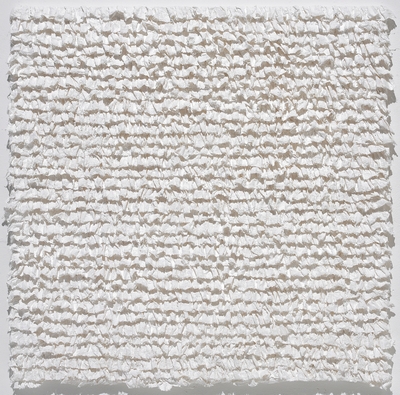Georgia O’Keeffe et ses amis photographes
Musée de Grenoble
7 novembre 2015 - 7 février 2016
Commissariat de l’exposition
Guy Tosatto, conservateur en chef, directeur du musée de Grenoble
Sophie Bernard, conservateur, chargée des collections modernes et contemporaines
Musée de Grenoble
5, place Lavalette, 38000 Grenoble
www.museedegrenoble.fr
Musée de Grenoble
7 novembre 2015 - 7 février 2016
Première monographie consacrée en France à l’artiste peintre américaine Georgia O’Keeffe, cette exposition au musée de Grenoble constitue un événement exceptionnel. Réalisée avec la participation de la Fondation O’Keeffe de Santa Fe (Nouveau Mexique, Etats-Unis) et le soutien du réseau franco-américain de musées FRAME, elle retrace la carrière d’une icône de l’art américain aussi célèbre aux Etats-Unis que Jackson Pollock. Celle-ci se développe sur plus d’un demi-siècle, des débuts du modernisme américain à l’abstraction des années 1960. De ses premières créations à New York à son installation au Nouveau Mexique en 1949, O’Keeffe fut fortement influencée par la photographie moderne. L’exposition fera ainsi dialoguer ses peintures avec les images de ses amis photographes et formera, un ensemble total de 80 œuvres issu de quinze prestigieux musées américains mais également de grandes institutions allemandes, espagnoles et françaises.
Georgia O’Keeffe occupe une place singulière dans le contexte de l’art américain. Ses peintures, reconnaissables entre toutes, se distinguent par leur immédiateté, la sensualité de leurs couleurs et la clarté de motifs qui s’imposent, avec insistance, à la mémoire. La force de ces images, qui viennent question- ner le visible, tient au trouble créé par des formes énigmatiques oscillant sou- vent entre abstraction et figuration. Abandonnant l’abstraction organique de ses débuts, l’artiste se fait connaître, dans les années 1920, par des pein- tures de fleurs et de buildings au réalisme photographique. Elle assimile alors l’esthétique précisionniste des peintres du cercle de Stieglitz – Arthur Dove, John Marin, Charles Demuth et Marsden Hartley, pour ensuite donner corps à un répertoire formel unique, profondément marqué par sa vie dans le désert du Nouveau Mexique. A partir des années 1960, en communion spirituelle avec son environnement du Sud-Ouest, O’Keeffe peint des compositions abstraites, dont la pureté formelle et la sensualité des tons se font l’écho des travaux de Mark Rothko, Ellsworth Kelly ou Agnes Martin.
Née en 1887, dans le Wisconsin à Sun Prairie, Georgia O’Keeffe élabore très jeune une œuvre personnelle inspirée par les vastes plaines du Texas et marquée par les arabesques de l’art nouveau. A la suite de sa rencontre avec le photographe et défenseur des avant-gardes, Alfred Stieglitz, elle s’installe à New York en 1918 pour se consacrer exclusivement à son œuvre. Muse puis épouse du photographe en 1924, O’Keeffe découvre l’avant-garde européenne à la galerie 291 et fréquente le cercle de Stieglitz.
Fruit d’une individualité forte, son œuvre unique puise ses sources dans la nature. Entre abstraction et figuration, son travail se développe en séries selon un parti pris résolument moderniste. Ses compositions naissent avant tout de son observation du monde. Ce sont d’abord les ciels du Texas, les montagnes de Lake George, les buildings de New York et les fleurs. A partir de 1929, l’artiste choisit de passer ses étés à Santa Fe avant de s’installer définitivement au Nouveau-Mexique en 1949. Elle vit alors en communion intime avec la nature, goûtant la solitude des grands espaces, conduisant sa voiture à travers le désert. Cette expérience lui inspire de nouveaux sujets : architecture vernaculaire, canyons, os, ciels et rivières.
Tout au long de sa carrière, Georgia O’Keeffe est attentive aux développements de la photographie moderne. La vision photographique qu’elle assimile explique en partie la force de ses images. Aussi jalonnant le parcours de l’exposition, au-delà des célèbres clichés de Stieglitz qui le premier sut saisir la beauté de l’artiste, sept photographes qui ont marqué son œuvre peint, qu’elle a elle-même influencés – Alfred Stieglitz, Paul Strand, Edward Weston, Imogen Cunningham, Ansel Adams, Eliot Porter et Todd Webb - seront présentés. Georgia O’Keeffe partageait avec eux non seulement une communauté de motifs mais des lieux de prédilection – New York, le Nouveau-Mexique – qui forgèrent leurs regards respectifs.
Commissariat de l’exposition
Guy Tosatto, conservateur en chef, directeur du musée de Grenoble
Sophie Bernard, conservateur, chargée des collections modernes et contemporaines
Musée de Grenoble
5, place Lavalette, 38000 Grenoble
www.museedegrenoble.fr



























